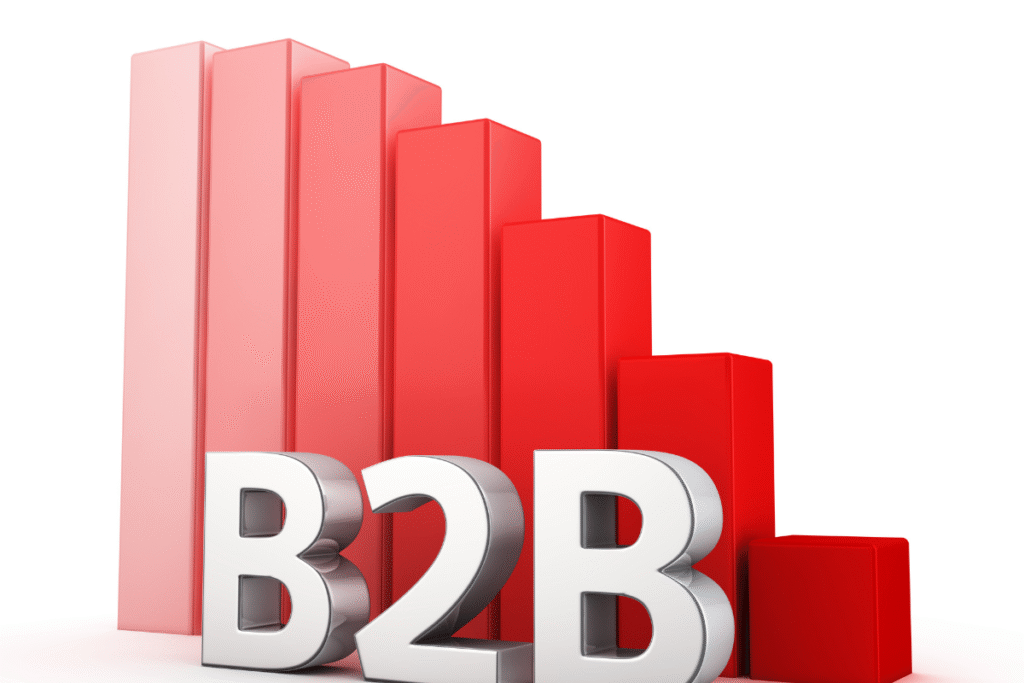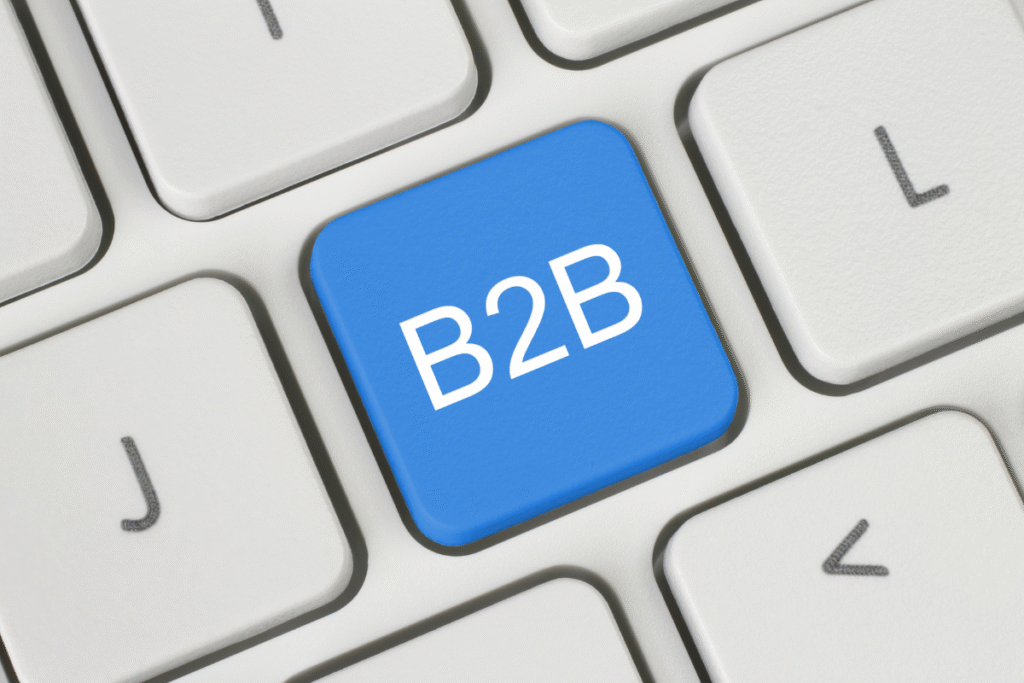In the world of B2B, when thinking about what size to present as a service provider, Yes size matters and often, size is very closely aligned with perceived stability. When a buyer is ultimately seeking a provider, they want to feel confident that you can deliver. But what if you are a two-person operation or a small firm? Fortunately, you absolutely do not have to “fake” size, you just have to “look” the part of trustworthy and capable.
Kick-start your B2B branding as this will help you project authority and seem larger than you are. It is not being phony or fake, but rather it is being strategic to show off the best you have to offer, with polish and in a consistent manner.
With so many commercial and B2B brands in the market competing for buyers’ attention, it has become increasingly difficult to even reach businesses, let alone stand out and get them to purchase from you, and even if you have been able to secure a handful of buyers, it is a hard slog to keep them coming back.
However with a clearly defined brand presence you can build remembrance in the minds of clients, and a sense of personal connection and trust in your products so that it is more than a basic “transaction”, but rather can be a “relationship” that informs that they have the urge to return, or even spend more on what you have offered.
Brand consistency is important nowadays in the marketplace, regardless of what field you are in. Just to be clear, your brand is most likely one of, if not THE most valuable assets your business has.
In order for a small business to be memorable to its customers, there must be brand consistency throughout every aspect of the brand; brand name, logo design, tag lines, web design, packaging design, signage, social media accounts, etc.
By having consistent branding across many platforms, be it online, print, or video, a small business is creating brand awareness. Brand awareness leads to brand loyalty, which ultimately leads to sales.
Let’s outline how you can appear bigger and win more clients, step by step.
What is B2B branding?
B2B branding allows customers to identify the differing offers of other organisations and assess which one is best suited to meeting the demand they have.

- A good B2B brand: Is easy to identify
- Has a clearly articulated, long term purpose and vision
- Has a strong reputation perceived positively by its target audience
A strategically developed B2B brand designed using audience or market data allows a company to define its brand as the first choice to position itself appropriately in the market. Real and creatively expressed B2B brands that are very different and closely linked to how purchasing decisions are made should make it easier for the target audience to choose them.
Research from the Boston Consulting Group and Google indicates 95% of respondents said that brand marketing allows companies to differentiate themselves from the competition.
B2C brands have recognized for decades the value of communicating at an emotional level, developing memories that result in awareness and distinction for their brand. A large part of this is getting into the way decisions are formed — approximately 95% is emotional and intuitive according to Harvard Business Professor, Gerald Zaltman.
Many B2B companies are realizing they need to connect with the people behind the companies they want to sell to. As Jamie Ross-Skinner, Insights Director at Tipi Group, pointed out in an interview with The Drum, “you need to look beyond the suit and tie.”
There is still a notion that thinking and decision-making happen on a wholly rational level. This has resulted in B2B companies discussing and selling features and benefits of their solution instead of creating meaning and differentiation, making it impossible for their buyers to differentiate between alternative solutions, especially when the offered products or solutions are quite similar.

B2B Branding 101
1. Create a Professional-Looking Website
Your website is your digital handshake. It needs to look clean, modern and stable. Small businesses often lose deals because their website feels high risk. Buyers assume your product is high risk as well. Implement clean design, fast load speed, mobile optimization and easy navigation.
Add clear CTAs (“Get a Demo” or “Book a Call”) and include foundational B2B sections:
- Case studies
- About us
- Contact form with business email (no gmail or yahoo email)
- Logos or testimonials
- Webflow, Wix Studio, and WordPress with premium themes are beneficial here.
89% of B2B buyers use the internet to assist in the B2B research process.
2. Create Consistent Messaging Across Channels
Talk with one voice, everywhere, in your email, social, website, and brochures. Trust is built with consistency. Disjointed brand messaging will create confusion.
Start with a basic brand voice guide that includes:
- Mission
- Tagline
- Tone (casual, expert, friendly?)
- Message pillars
Repeat core messages everywhere (in email, LinkedIn, Landing pages, and ads) and use the same elevator pitch when someone asks what you do. Consistent brand presentation increases revenue by up to 23%.

3. Make the investment in visual identity, like logo, fonts, and brand colours.
Design helps people remember, and trust you faster. A strong logo and visual identity make your business look more established. Don’t use generic templates.
Hire a freelance designer from Fiverr or 99Designs, or use tools like Looka or Canva Pro.
Your brand kit should include:
- Logo variations (color, black & white)
- Primary and secondary colors
- Fonts
- Imagery style
Keep these consistent across your site, proposals, email signatures, and socials.
| Asset | Description | Use Case |
| Logo | Primary + alt formats | Website, social, invoices |
| Fonts | Headline + body | Site, pitch decks |
| Colors | Primary + accents | Buttons, graphics |
4. Highlight Social Proof: Case Studies, Reviews, and Testimonials
Let others prove that you’re spectacular. It means more.
B2B buyers want proof you’ve achieved outcomes. Capture quotes, ratings, video testimonials and complete case studies.
Tips:
- Take 1 client success and turn it into a complete case study
- Ask for reviews on Google or Clutch
- Post testimonials on your homepage
- Repurpose quotes into pitch decks and ads
72% of B2B buyers report that reviews have a major influence on their purchasing decisions.
5. Use a Business Email Address
If your email address is @gmail.com, you are leaving deals on the table.
Using a custom domain email address (like hello@yourcompany.com) is more professional, showing you mean business.
It’s simple. Sign up for Google Workspace, or use Zoho Mail. Make sure you add email signatures with your:
- Logo
- Title
- Phone number
- Website URL
Make sure email templates maintain your brand, this includes both cold emails and follow ups and proposals.
6. Publish Valuable Content on LinkedIn and Your Blog
Thoughtful content makes your business look busy and credible. Write easy to read blog posts to answer client questions. Post short thoughts and insights on LinkedIn. You don’t have to post every day. Once a week is reasonable.
Some ideas for content:
- Answer some of the common and often asked client FAQ
- Explain your processes
- Share notable before/after case results
- Post behind the scenes or team wins
- It will help you remain top of mind and show you care about your space and you know what you’re doing.
B2B marketers that blog get 67% more leads than those who don’t.
7. Use Mockups or Templates to Look Enterprise Brand
Don’t send a justify doc, send a branded proposal or branded report
Use templates for:
- Sales decks
- Onboarding documents
- Proposal PDFs
You can find those on Canva, Envato, or even Google Docs. Just add your brand logo and colour scheme. Being super clean on formatting can make you look like you have your act together.
8. Add Trust Signals: your Certifications, Affiliations, Press Mentions and more
Show people you’re real and recognized. It does pay to be small but have your company look trustworthy.

Try these:
- Get appropriate certifications (e.g. ISO, BBB, minority-owned)
- Join business associations
- Get quoted in blogs in your industry
- Apply for local awards
- Consider adding these to your homepage and About page.
- Consistency matters
- Look professional, not cheap
- Let happy clients do the talking
- Design and branding = perceived value
You aren’t faking it, you’re representing your small business as capable, clear, and confident.
With some tools and habits, you can go toe-to-toe with larger companies. Pick one thing to change this week – maybe your email or about page. That trust will pay off.
Frequently Asked Questions About Small Business Branding
1. Can I create a strong brand without a budget?
Yes! Free tools like Canva, WordPress and Google Workspace are a big deal. Simple branding is better than complicated branding.
2. What is the first step for branding a new B2B business?
Start on your messaging; get clear on who you serve and how you serve them.
3. Should I use a designer or DIY for branding?
If you can afford a designer, hire a designer. If not, use templates and you can upgrade as you grow.
4. How often should I update my brand assets?
Review every 12–18 months. Refresh only when something feels outdated or inconsistent.
5. What are the top 3 branding mistakes small businesses make?
- Inconsistent messaging
- Generic design
- No social proof
Final Words
Branding is a huge factor to the success of any business, large or small. When done effectively, great branding elevates your business, product, and/or services above competition by creating a lasting impact with customers.
The fundamental nature of branding makes it worthwhile for small business owners in any industry to look into professional branding services. The purpose of this article is to assist small businesses in ensuring that their branding is on point.